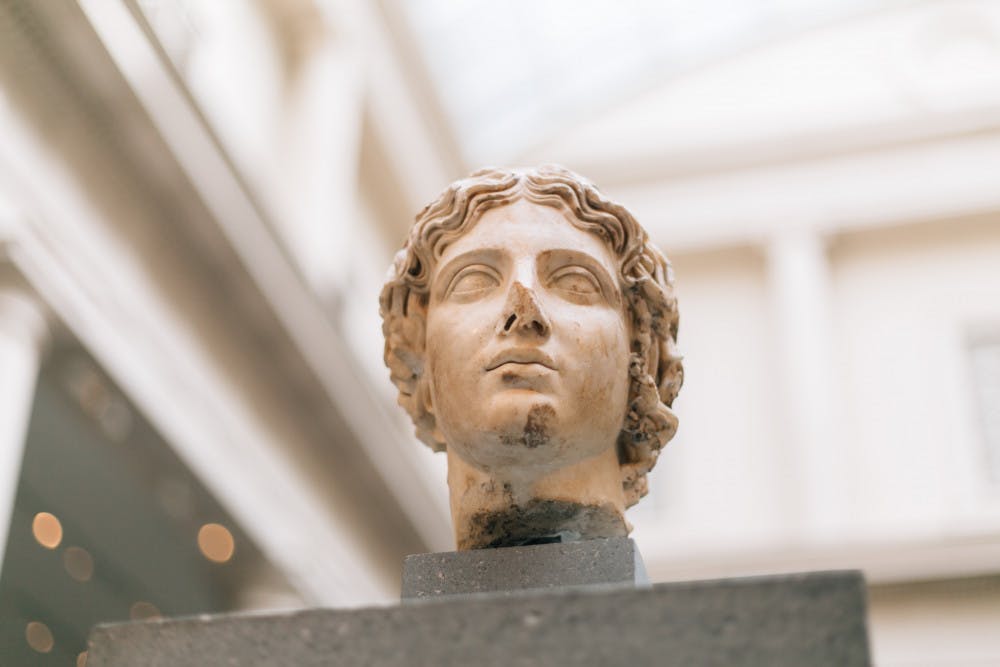Last Wednesday, Gov. Ron DeSantis signed the order that will replace the statue of Confederate General Edmund Kirby Smith in the National Statuary Hall with that of educator Mary McLeod Bethune, an African American educator. This switch is for the better.
The National Statuary Hall is a space set aside in the U.S. Capitol for each statues to choose two statues to represent itself. Some big names are included in the hall such as Samuel Adams for Massachusetts and Thomas Edison for Ohio. Florida’s states are John Gorrie — a pioneer in early air conditioning — and Confederate States General Edmund Kirby Smith.
Gorrie’s placement is fairly obvious. Anyone who has lived in Florida can confirm most of the state is practically unlivable without air conditioning.
On the other hand, the case for Smith is a bit less clear. For now, let’s put aside the question of whether we should honor someone who fought for the Confederacy and wonder whether Smith actually contributed to Florida in some way.
He was born in St. Augustine, but he was educated mostly outside of Florida. He fought outside of Florida, and he lived in Tennessee after the Civil War.
Is it a reflection of Florida’s role in the Civil War, and how Smith’s role in the Civil War changed Florida? Probably not.
Florida was sparsely populated at the time of the Civil War, and while Florida joined the Confederacy, it only hosted two major battles within its borders. Neither battle really helped determine the course of the war.
So, why use Edmund Kirby Smith? Based on when Smith’s statue was gifted to the collection, 1922, and what we know about the motivation for erecting other Confederate statues, we can make an inference.
According to NPR, Confederate statues were mostly built in two big spurts: first in the early 1900s (which is when Smith’s statue joined the National Statuary Collection) and again in the 1950s and 1960s. Notably, both periods overlap with periods of deep racial tension and hostility toward African Americans. In this case, the early 1900s saw the enactment of many Jim Crow laws, which disenfranchised black Americans. The 1920s in particular was a period when the Ku Klux Klan experienced a resurgence across the country. It seems reasonable to conclude that Smith’s statue was added to the collection not to honor a long-dead Civil War general, but to serve as a reminder of white supremacy. Smith’s statue says that Florida is a land where white supremacy is protected and proudly displayed.
Mary McLeod Bethune is a good replacement for Edmund Kirby Smith. In short, she actually contributed to Florida and made it a better place. Bethune was an African American educator who opened a boarding school to educate African American girls. Her school eventually evolved into Bethune-Cookman University in Daytona Beach, Florida, a historically black university.
Bethune also has national significance. She was part of President Franklin D. Roosevelt’s unofficial ‘black cabinet’ and became the highest-ranking African American woman in government at the time when Roosevelt appointed her director of Negro Affairs of the National Youth Administration in 1936.
You may think choosing statues is irrelevant. But when Florida decides which two statues it’s going to send to represent us in our nation’s capital, they aren’t just statues.
These are symbols of what Florida is and what Floridians value.
We need to remove the statue of Edmund Kirby Smith, who made little contribution to Florida and whose main function is as a symbol of oppression, and replace it with a statue of Mary McLeod Bethune, who positively contributed to Florida and represents both Florida’s black community and Florida’s enterprising spirit.
It’s as simple as that.
Jason Zappulla is a UF history senior. His column appears on Tuesdays.
Photo by Juliet Furst on Unsplash.





![Photo of the missing Leachianus “Leachie” gecko. [Photo courtesy of Mike Southwick]](https://snworksceo.imgix.net/ufa/907bd92a-0b29-40eb-a5fb-d7db7cf98b2f.sized-1000x1000.jpg?w=1500&ar=16%3A9&fit=crop&crop=faces&facepad=3&auto=format)
